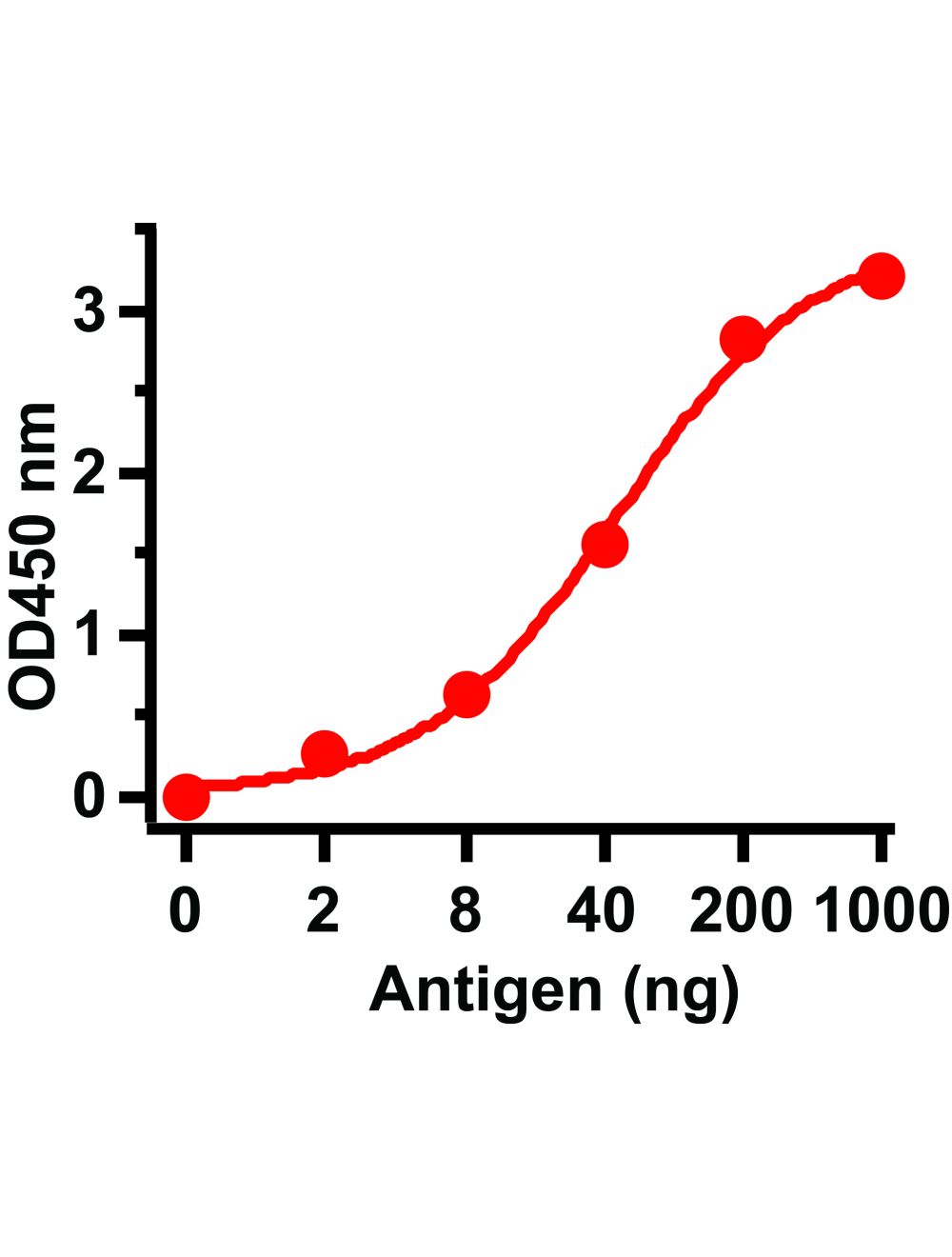SARS-CoV-2 envelope small membrane protein, Rabbit Polyclonal Antibody
As low as
US$477.00
Only %1 left
Catalog Number
R-1961
- Product Name SARS-CoV-2 envelope small membrane protein, Rabbit Polyclonal Antibody
- Product Description Rabbit anti-SARS-CoV-2 envelope small membrane protein Polyclonal Antibody (Unconjugated), suitable for ELISA.
- Alternative Names SARS-CoV Envelope Antibody: sM, 4, Envelope small membrane protein, E protein
- Application(s) ELISA
- Antibody Host Rabbit
- Antibody Type Polyclonal
- Specificity Predicted reactivity based on immunogen sequence: SARS-CoV2 Envelope protein: (identity 82%, homology 91%)
- Species Reactivity Virus
-
Immunogen Description
Anti-SARS-CoV Envelope antibody (R-1961-100) was raised against a peptide corresponding to 11 amino acids near the carboxy terminus of SARS-CoV Envelope protein.
The immunogen is located within the last 50 amino acids of SARS-CoV Envelope. - Conjugate Unconjugated
- Concentration 1 mg/mL
- Purity Description Affinity-purified via peptide column.
- Regulatory Status For research use only.
Product Info
- Product Description Rabbit anti-SARS-CoV-2 envelope small membrane protein Polyclonal Antibody (Unconjugated), suitable for ELISA.
- Application(s) ELISA
- Application Details SARS-CoV Envelope antibody can be used for the detection of SARS-CoV Envelope protein in ELISA. It will detect 5 ng of free peptide at 1 μg/mL.
- Target SARS-CoV-2 envelope small membrane protein
- Specificity Predicted reactivity based on immunogen sequence: SARS-CoV2 Envelope protein: (identity 82%, homology 91%)
- Target Host Species Virus
- Species Reactivity Virus
- Antibody Host Rabbit
- Antibody Type Polyclonal
- Antibody Isotype IgG
- Conjugate Unconjugated
-
Immunogen Description
Anti-SARS-CoV Envelope antibody (R-1961-100) was raised against a peptide corresponding to 11 amino acids near the carboxy terminus of SARS-CoV Envelope protein.
The immunogen is located within the last 50 amino acids of SARS-CoV Envelope. - Homology Predicted reactivity based on immunogen sequence: SARS-CoV2 Envelope protein: (identity 82%, homology 91%)
- Isoform Information SARS-CoV Envelope has one isoform (75aa).
- Purity Description Affinity-purified via peptide column.
- Format Liquid. SARS-CoV Envelope Antibody is supplied in PBS containing 0.02% sodium azide. Conc.1 mg/mL
- Concentration 1 mg/mL
- Reconstitution Instructions Spin vial briefly before opening.
- Storage Instructions SARS-CoV Envelope antibody can be stored at 2-8°C for three months and -20°C, stable for up to one year. As with all antibodies care should be taken to avoid repeated freeze thaw cycles. Antibodies should not be exposed to prolonged high temperatures.
- Batch Number Please see item label.
- Expiration Date 12 months after date of receipt (unopened vial).
- Alternative Names SARS-CoV Envelope Antibody: sM, 4, Envelope small membrane protein, E protein
- Uniprot Number P59637
- Uniprot Number/Name P59637 (VEMP_SARS)
- NCBI Official Full Name Envelope small membrane protein
- NCBI Official Symbol E
- NCBI Organism SARS coronavirus
- Scientific Background SARS Envelope Antibody: A novel coronavirus has recently been identified as the causative agent of SARS (Severe Acute Respiratory Syndrome). Coronaviruses are a major cause of upper respiratory diseases in humans. The genomes of these viruses are positive-stranded RNA approximately 27-31kb in length. SARS infection can be mediated by the binding of the viral spike protein, a glycosylated 139 kDa protein and the major surface antigen of the virus, to the angiotensin-converting enzyme 2 (ACE2) on target cells. This binding can be blocked by a soluble form of ACE2. Envelope protein is a small polypeptide that contains at least one α-helical transmembrane domain. It involves in several aspects of the virus's life cycle, such as assembly, budding, envelope formation, and pathogenesis. E protein has membrane permeabilizing activity, which provides a possible rationale to inhibit in vitro ion channel activity of some synthetic coronavirus E proteins, and also viral replication.
- Research Area Infectious Disease
- Shipping Temperature 2-8°C (on cold packs)
- UNSPSC CODE 41116161
- Regulatory Status For research use only.
Specifications
-
General References
Marra et al. Science 2003;300:1399-404.
Rota et al. Science 2003;300:1394-9.
Navas-Nartin et al. J Neurovirol. 2004;10:75-85.
Pervushin et al. PLoS Pathog. 2009; 5(7): e1000511.

 1800 605-5127
1800 605-5127 +61 (0)8 8352 7711
+61 (0)8 8352 7711

